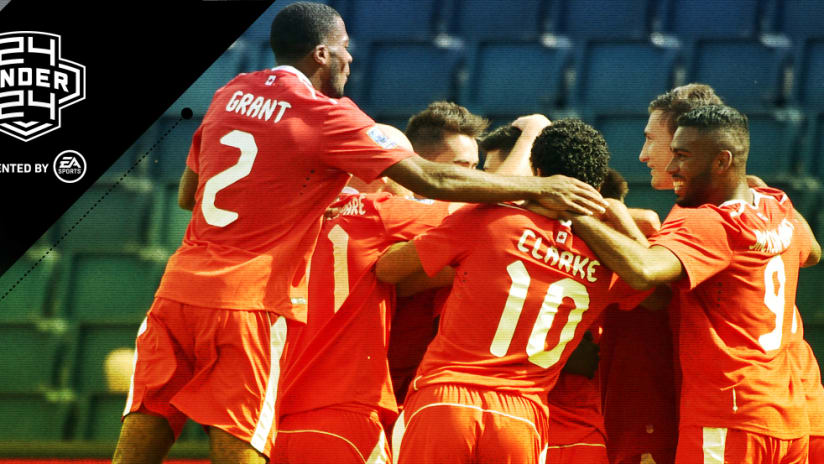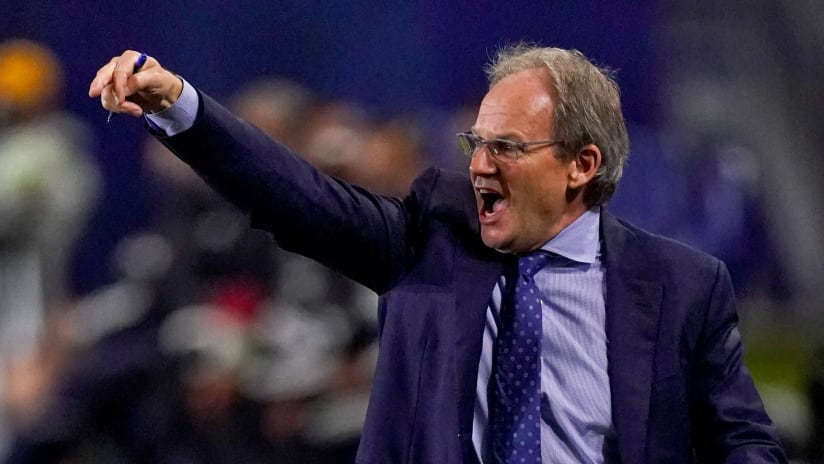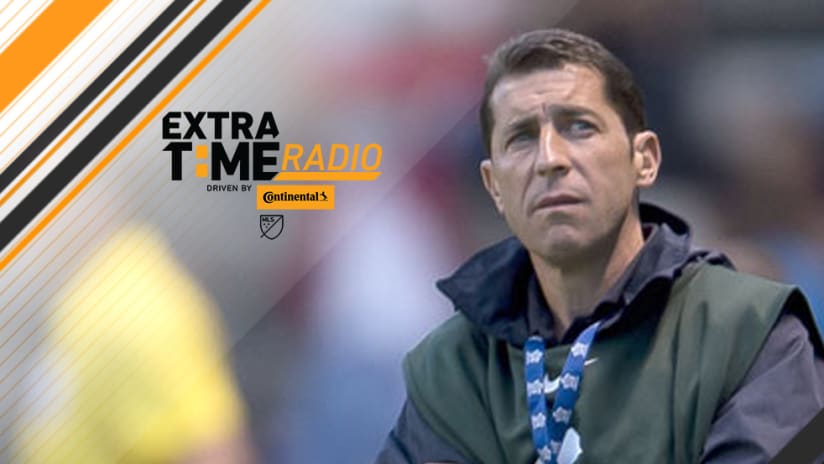Another World Cup qualifying campaign has fallen short, and Canadians are seeking a savior who’ll lead the men’s national team to glory.
Maybe it’ll be the next national team manager, or that promising kid coming up through the pro ranks, or Jason deVos, or…
It won’t be any of them. There’s no individual savior.
When a wealthy, developed nation with hundreds of thousands of youth soccer players misses eight straight World Cups, it’s no accident; the system needs work.
No single person can take Canada out of the men’s soccer wilderness. There are, however, plenty trying to do their part.
Twenty years ago, Colin Elmes wanted to make a living in Canadian soccer. But the former collegiate and youth national team player encountered a culture of amateurism.
Canada had no top-flight professional teams, with the old Canadian Soccer League having folded in 1992. In the boardrooms, there was little impetus to provide much beyond recreational soccer.
The Canadian Soccer Association was beholden to regional governing bodies, whose presidents comprised the CSA’s board of directors and whose recreational clubs collected the player fees that fed the national budget.
So Elmes forged his own path. In 1997, he and several partners established TSS Academy, initially operating out of a Vancouver high school.
“In those days, paying for soccer was almost sacrilege,” says Elmes. “The spirit of the game was volunteerism.”
In a country where soccer is by far the most popular youth sport, Elmes found a customer base. His academy grew, and recently moved into a new, 20,000-square-foot facility.
Some consider Elmes an outsider or a profiteer. He’s fought a long-running battle with the British Columbia Soccer Association (even taking them to court), seeking fuller recognition of his academy, which is currently an associate member of BC Soccer rather than a full member, as is the case with other for-profit academies.
Despite his difference with the provincial association, Elmes still wants full membership so that when people move to BC and seek options for their kids, his academy is on the list as a "destination of choice."
Says newly-hired CSA Director of Development Jason deVos, "I see no reason why private academies cannot operate under the same system as non-profit community clubs. I’ve never been able to justify it on a technical level, if they meet the same standards and believe in the same things."
And over time, the non-profit and for-profit worlds have drifted closer together.
“The irony there is quite interesting,” says Elmes. “The establishment has morphed into us, to a certain degree.”
“Boot it!”
For decades, the “Canadian style” at community clubs entailed thumping the ball downfield to the big, strong kid who could score. Nothing fancy. Just boot it.
It was espoused by volunteer coaches who often knew little of soccer, guided by a hockey culture that prizes grit and physicality above finesse.
Were most players enjoying themselves, or learning key soccer skills? The high dropout rates around age 12 suggested not.
Eventually, the CSA realized the “Canadian style” wasn’t working. In 2005, it began work on a long-term player development (LTPD) plan, culminating in 2009 with “Wellness to World Cup”.
“Canadian soccer must create a well-defined pathway for player development” to foster national-team success, the plan said.
That meant radical change within community clubs: altered game structures, and emphasis on teaching fundamental skills rather than winning trophies. The transition wasn’t always smooth, as seen firsthand by Rob Gale in his role as technical director of the Manitoba Soccer Association (2006-2014).
“You can come up with the plans, technical guidelines, curriculums,” says Gale. “But the infiltration and implementation of that is very hard to police.”
The removal of standings at the youngest ages, meant to let players express themselves without reprimand from results-obsessed adults, stoked fierce resistance. But seven years on, attitudes have shifted – as evidenced by Gale’s two young soccer-playing daughters.
“They’ve never had standings, so they don’t worry about it,” says Gale, who is now the head coach of the Under-20 men’s national team. “It’s adult-learned behavior.”
LTPD has also altered the culture of amateurism, with many community clubs now hiring technical staff to complement volunteer coaches.
“There’s been a sea change in the infrastructure of clubs, and also the pathway for players to develop to higher levels,” says Gale.
“Just because we did [something] in the past doesn’t mean it was right.”
With experience as a player, coach, technical director and analyst, deVos was a popular choice as the CSA’s first Director of Development. But the move didn’t happen in isolation.
In 2011, the CSA reformed its dysfunctional governance structure, and won the right to host the 2015 Women’s World Cup. Revenue from that competition – plus new sponsorships and merchandise deals – have eased the CSA’s reliance on player fees funneling through regional power brokers.
That let the CSA focus on national projects like its five-year strategic plan, which called for “investment in technical leadership – including deVos’s new role.
Beyond being the public face of Canadian player development, deVos has already put in work behind the scenes. He helped found the Ontario Player Development League, a “high-performance league” (HPL) for elite teenage players with professional ambitions. Similar leagues also exist in British Columbia and Quebec.
DeVos says the most important part of his first few months on the job will be collecting feedback from stakeholders coast-to-coast. He says there’s no “one-size-fits-all” solution in this giant nation, but he does have one clear vision in mind.
“Every decision we make must be in the best interest of the player,” he says.
At ages 10 and below, that means getting coaches to act like teachers rather than tacticians. And throughout the pyramid, it means “developing the skill sets we know are needed in the international game, because we’ve never done that.”
DeVos says anyone committed to best practices in player development should be welcome at the table – including private academies.
“Exclusion hasn’t worked for us,” he says. “We have to be more inclusive about our approach to soccer and how we deliver soccer in our country.”
What Canada needs, according to Dino Rossi, is a “footballing industry”.
When clubs aren’t motivated to develop top talent, he says, players and coaches often stagnate.
Over the past decade, however, academies have provided “an injection of competition into the marketplace” in Rossi’s home province of Ontario, which – in conjunction with the CSA’s LTPD plan – has spurred clubs into upping their player-development game.
Rossi wanted those entities to have something to strive for at the adult level. So in 2011, he helped get the ball rolling on League1 Ontario, a semi-pro league focusing on 18-to-23-year-old Canadians with national-team ambitions.
L1O launched in 2014 with Rossi as commissioner, and has already given experience to the likes of Orlando City's Cyle Larin and Toronto FC's Molham Babouli in MLS. The league’s 16 teams represent a mix of community clubs and private academies, including the Toronto FC Academy.
“There’s a lot of club programs that seem very similar to what academies are doing, and academies are broadening their offerings,” says Rossi. “Players are being thought of, first and foremost.”
Rossi works closely with CSA officials, and hopes to see more regional leagues like L1O (and its Quebec-based equivalent, the Premiere Ligue de Soccer du Québec, aka PLSQ) pop up nationwide. Above all, his ambition is to give players a stepping stone to the professional game and the national team scene.
“We don’t want to do things that don’t marry up with the objectives of the national governing body – because otherwise, why are we doing it?”
The most visible change of the past decade has been the ascent of Canada’s five MLS and NASL clubs, their academies and the three MLS-affiliated USL teams.
While those programs have provided previously non-existent opportunities for countless Canadians (check any youth national team roster from the past half-dozen years), rumors are heating up about the potential arrival of a new league in Canada that would provide even more opportunities for young Canadian players while still keeping the path open to top-flight first-division soccer with Canada-based MLS teams.
Though no details have been publicly confirmed yet, there’s growing buzz about the prospect of hundreds of new pro opportunities for Canadian players and coaches, and its impact on the national-team player pool. This is especially true for the Canadian players in NCAA and L1O who may not catch on right away with an MLS or foreign team.
“Opportunities for more Canadian players is something Toronto FC wants to support,” Toronto FC president Bill Manning recently told the Toronto Sun. “We just have to figure out how we can be involved ... We want to have those conversations and be supportive of it.”
From LTPD to HPLs, semi-pro options and a domestic pro league – in addition to the pro environments that already exist – Canada is inching closer to that long-awaited player pathway that finally spans coast to coast.
Still, many questions linger. What role will private academies play? Will more HPLs and semi-pro leagues start up coast-to-coast? What about talented kids whose families can’t afford the pay-to-play model?
And when will it all pay off?
No one’s writing off Qatar 2022 just yet. In addition to the players emerging in MLS like Tesho Akindele, Russell Teibert and Larin, the CSA is also actively scouting players with Canadian connections, like Scotland-born Scott Arfield, who can continue boosting the ranks.
But looking at other nations’ long-term plans, and considering Canada’s unique challenges with size and a developing soccer infrastructure, it could take at least a decade before player-development initiatives start bearing fruit at the top level.
Even so, deVos is confident there’s light at the end of the tunnel.
“I don’t think I would have changed course in my professional career at this stage of my life if I wasn’t excited about this,” he says. “It’s not going to happen quickly, but I’m committed to doing this.”













